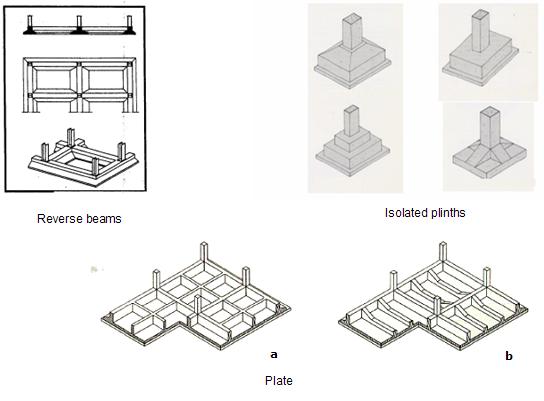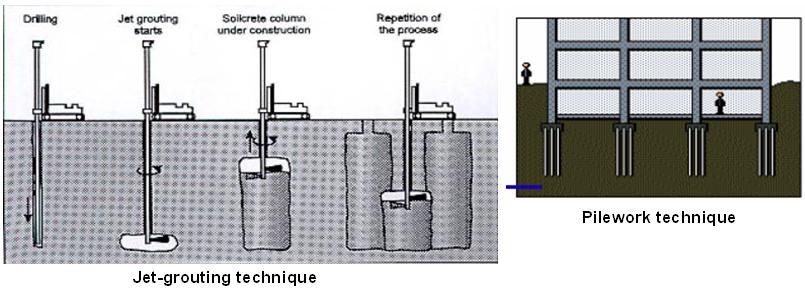Ground–structure interaction
This article provides insufficient context for those unfamiliar with the subject. (October 2009) (Learn how and when to remove this template message) |
Design
The interaction between soil (ground) and structure consists of an exchange of mutual stress between the structure itself and the foundations ground. This means that the movement of the whole ground-structure system is influenced by the type of ground as well as by the type of structure. The main types of foundations, based upon several building characteristics, are:
- Isolated plinths (currently not feasible)
- Plinths connected by foundations beams
- Reverse beams
- A plate (used for low-quality grounds)
The filing of foundations grounds takes place according to the mechanical properties of the grounds themselves: in Italy, for instance, according to the new earthquake-proof norm – Ordinanza 3274/2003 – you can identify the following categories:
- Category A: homogeneous rock formations
- Category B: compact granular or clayey soil
- Category C: quite compact granular or clayey soil
- Category D: not much compact granular or clayey soil
- Category E: alluvial surface layer grounds (very low quality soil)
The type of foundations is selected according to the type of ground; for instance, in the case of homogeneous rock formations connected plinths are selected, while in the case of very low quality grounds plates are chosen.
For further information about the various ways of building foundations see foundation (architecture).
Both grounds and structures can be more or less deformable; their combination can or cannot cause the amplification of the seismic effects on the structure. Ground, in fact, is a filter with respect to all the main seismic waves, as stiffer soil fosters high-frequency seismic waves while less compact soil accommodates lower frequency waves. Therefore, a stiff building, characterized by a high fundamental frequency, suffers amplified damage when built on stiff ground and then subjected to higher frequencies.
For instance, suppose there are two buildings that share the same high stiffness. They stand on two different soil types: the first, stiff and rocky—the second, sandy and deformable. If subjected to the same seismic event, the building on the stiff ground suffers greater damage.
The second interaction effect, tied to mechanical properties of soil, is about the lowering (sinking) of foundations, worsened by the seismic event itself, especially about less compact grounds. This phenomenon is called soil liquefaction.
Mitigation
The methods most used to mitigate the problem of the ground-structure interaction consist of the employment of the before-seen isolation systems and of some ground brace techniques, which are adopted above all on the low-quality ones (categories D and E). The most diffused techniques are the jet-grouting technique and the pile work technique. The jet-grouting technique consists of injecting in the subsoil some liquid concrete by means of a drill. When this concrete hardens it forms a sort of column that consolidates the surrounding soil. This process is repeated on all areas of the structure. The pile work technique consists of using piles, which, once inserted in the ground, support the foundation and the building above, by moving the loads or the weights towards soil layers that are deeper and therefore more compact and movement-resistant.
External links
- Do you like to better understand what happens when seismic waves get through the ground-structure system? (in Italian)
- Seismic soil-structure interaction



